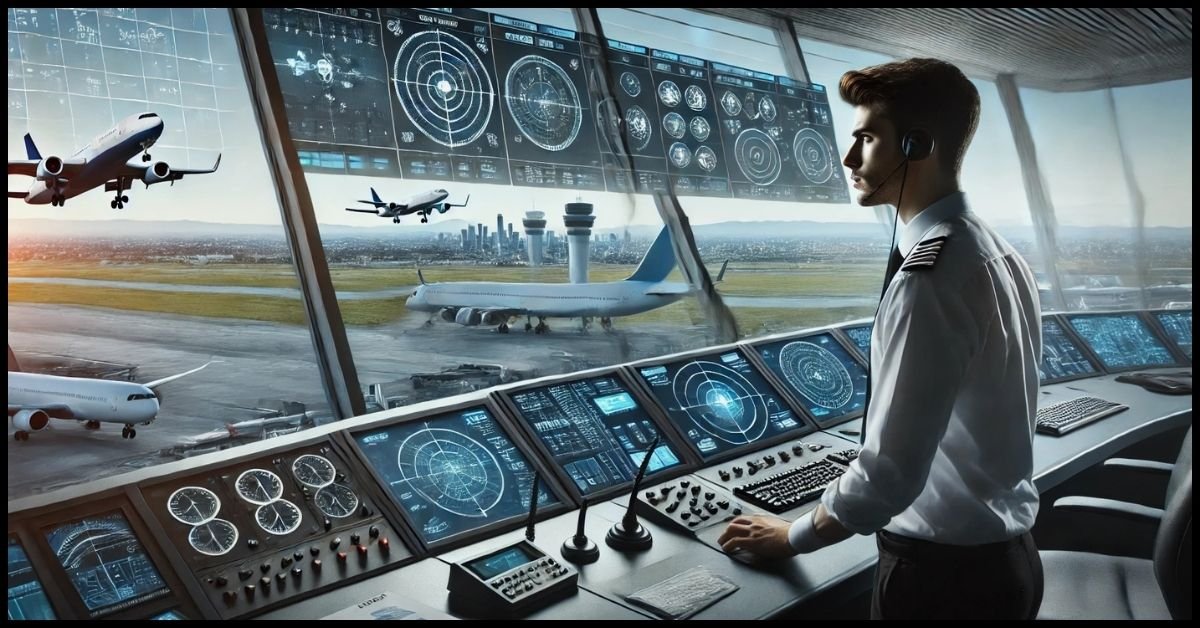Introduction to Adam Gillespie Air Traffic Controller
Air traffic controllers play a critical role in ensuring the safety of passengers and crew as they guide aircraft through complex airspaces. Among the best in this field is Adam Gillespie, who is synonymous with expertise and precision in the aviation industry. His story is not just about managing air traffic; it’s about mastering the art of keeping the skies safe for millions worldwide. In this article, we will explore Gillespie’s career, his contributions to the aviation sector, and the impact of his work as an air traffic controller.
Adam Gillespie: From Humble Beginnings to Aviation Expert
Early Life and Passion for Aviation
Adam Gillespie’s journey began like many aviation professionals: with a fascination for planes and flight from a young age. Growing up, Gillespie was curious about how such massive machines could soar precisely through the sky. His interest deepened when he visited an air traffic control tower during a family vacation, sparking a lifelong passion for aviation safety.
Unlike many who dream of flying, Gillespie was more interested in the logistics and systems behind aviation, particularly the vital role air traffic controllers play in orchestrating the movement of planes. This fascination led him to pursue a career in air traffic control.
Education and Training in Air Traffic Control
Becoming an air traffic controller is a challenging task. It requires rigorous training, a sharp mind, and staying calm under pressure. Adam Gillespie excelled in all these areas. After completing his aviation management and air traffic control systems education, he joined a specialized training program to develop his skills further. Gillespie learned everything from radar management and communication protocols to emergency response strategies here.
His training also included simulations of high-stress scenarios where multiple planes need guidance simultaneously. His ability to maintain focus, analyze real-time data, and provide accurate instructions made him stand out during his training. Gillespie’s mentors noticed his talent for remaining composed despite adversity, and he quickly rose through the ranks.
The Role of an Air Traffic Controller
Ensuring Safety in the Skies
As an air traffic controller, Adam Gillespie’s primary responsibility is ensuring commercial and private aircraft safety. Air traffic control involves managing the flow of planes in and out of airports and guiding aircraft through national and international airspace. The job is intense—controllers must make split-second decisions to prevent collisions and ensure smooth operations.
Gillespie’s approach to air traffic control has always focused on safety and efficiency. He is known for his calm demeanour and ability to keep the situation under control, even in the most stressful circumstances. For example, during a sudden weather change that grounded several flights, Gillespie efficiently coordinated landing and take-off sequences, ensuring minimal disruption and complete passenger safety.
Handling Emergency Situations
Managing emergencies is one of the most demanding aspects of air traffic control. Air traffic controllers must act quickly and decisively to avert disaster, whether it’s a medical emergency on board, engine failure, or severe weather conditions.
Adam Gillespie’s experience and expertise have been instrumental in handling multiple emergency landings. In one notable incident, a commercial aircraft reported engine troubles mid-flight. Gillespie coordinated swiftly with the pilot, ground teams, and nearby aircraft to create a safe landing path. His professionalism and quick thinking saved lives and earned him recognition within the aviation community.
The Impact of Adam Gillespie’s Work
Innovations in Aviation Safety
Over the years, Gillespie’s contributions to air traffic control have gone beyond managing day-to-day operations. He has been involved in developing new protocols and systems designed to improve aviation safety. One of his most significant contributions is modernizing communication methods between controllers and pilots. His expertise helped shape better communication strategies that reduced miscommunication-related incidents, one of the leading causes of aviation accidents.
Moreover, Adam Gillespie advocates using advanced radar and artificial intelligence systems in air traffic control. His forward-thinking approach ensures that the next generation of controllers can rely on more sophisticated tools to manage airspace safely and effectively.
Mentorship and Training the Next Generation
In addition to his work as a controller, Adam Gillespie has taken on a mentorship role, helping to train aspiring air traffic controllers. He believes in passing down his knowledge and experience to the next generation, ensuring that future controllers are well-prepared for the challenges ahead. Gillespie’s dedication to teaching has profoundly impacted his trainees, many of whom have gone on to become successful air traffic controllers in their own right.
Challenges in the Air Traffic Control Profession
Mental and Physical Demands
Being an air traffic controller is not for the faint-hearted. The job requires long hours, often in high-stress environments. Controllers must remain alert and make quick decisions without hesitation, which can lead to mental fatigue over time. Adam Gillespie has always been an advocate for mental health awareness within the aviation community. He has spoken about the importance of maintaining a healthy work-life balance and the need for support systems to help controllers cope with the stress.
Keeping Up with Technological Advances
With rapid advancements in aviation technology, air traffic controllers must continuously update their skills and knowledge. Gillespie is a firm believer in continuous learning. He regularly attends seminars and workshops on emerging technologies in aviation, ensuring he stays ahead of the curve.
FAQs About Adam Gillespie and Air Traffic Control
What qualifications are needed to become an air traffic controller?
To become an air traffic controller, candidates typically need an aviation or air traffic management degree. In addition to educational requirements, rigorous training and certification from a governing aviation authority are necessary.
How does Adam Gillespie handle stress on the job?
Adam Gillespie manages stress by focusing on mental clarity and maintaining a calm demeanour. He practices mindfulness techniques and takes regular breaks to recharge during long shifts.
What is Adam Gillespie’s most significant contribution to aviation?
One of Gillespie’s most notable contributions is improving communication protocols between pilots and controllers, significantly reducing miscommunication incidents in aviation.
What challenges do air traffic controllers face today?
Air traffic controllers face challenges such as high-stress environments, long working hours, and the need to adapt to rapidly evolving aviation technology.
How does Adam Gillespie train new air traffic controllers?
Gillespie mentors new air traffic controllers by sharing his extensive knowledge and real-life experiences, preparing them for the demanding and fast-paced nature of the job.
What technology does Adam Gillespie advocate for in air traffic control?
Adam Gillespie supports integrating advanced radar systems and artificial intelligence to improve the efficiency and safety of air traffic management.
Conclusion
Adam Gillespie’s journey from aviation enthusiast to expert air traffic controller is an inspiring story of dedication, skill, and passion. His work has ensured the safety of countless flights and contributed to the evolution of the air traffic control profession. As a mentor and advocate for technological innovation, Gillespie continues to shape the future of aviation. His story reminds us of the importance of precision, dedication, and the human element in an increasingly automated world.
Through his efforts, Adam Gillespie remains vital in ensuring that the skies remain safe for everyone.










